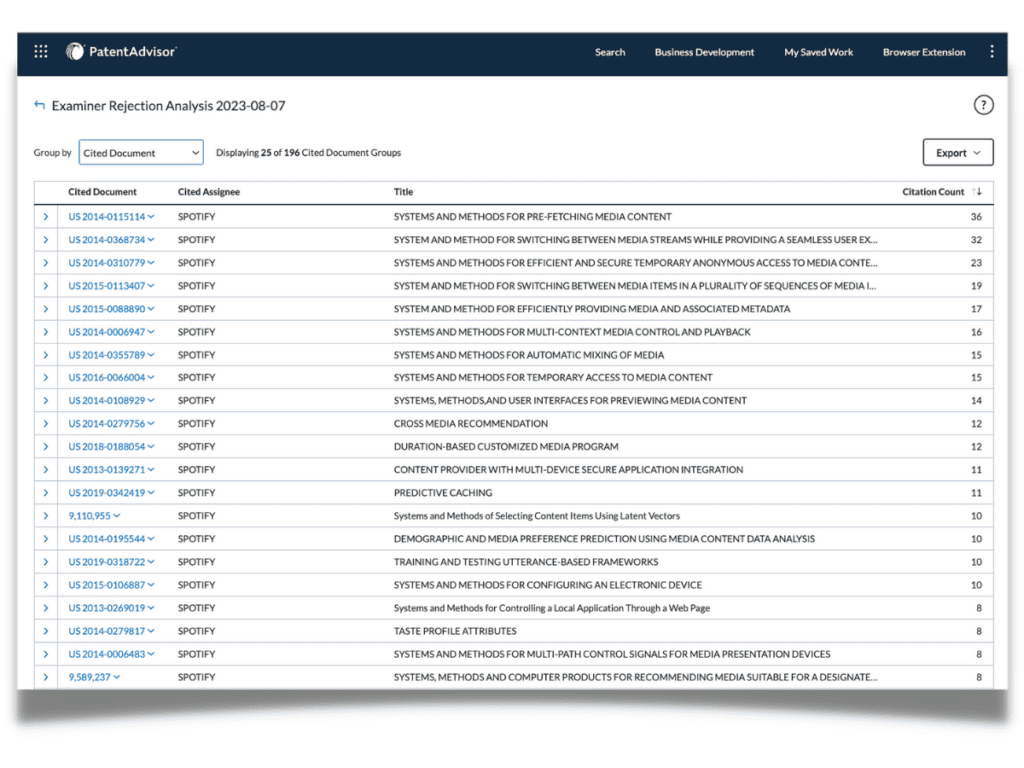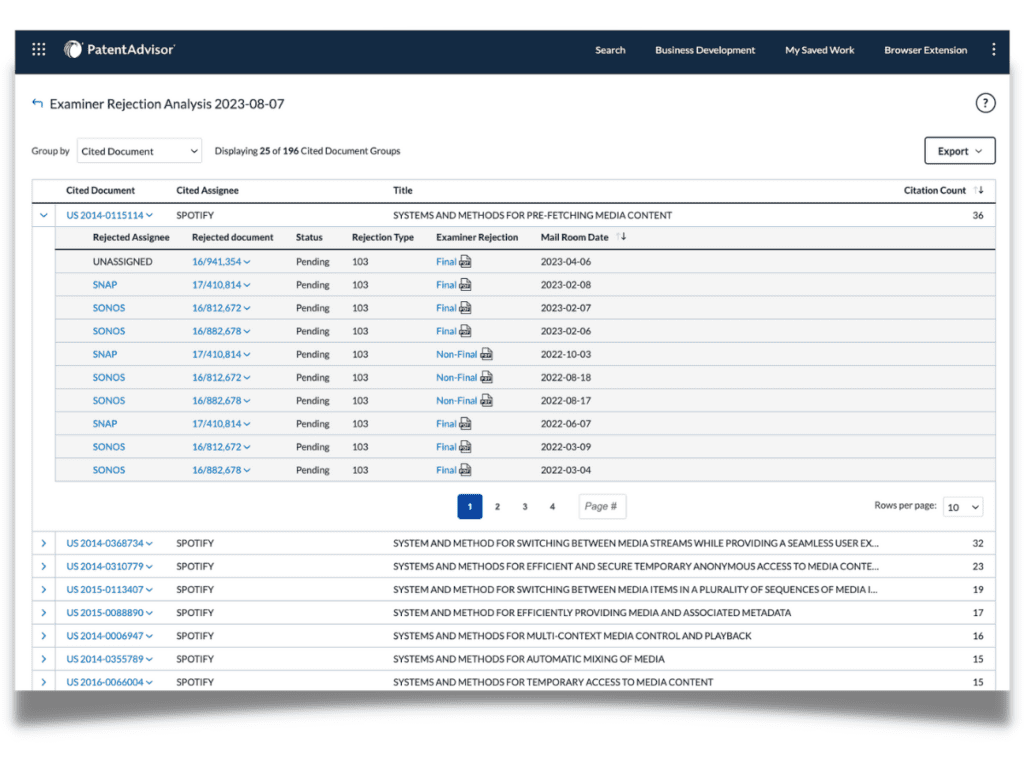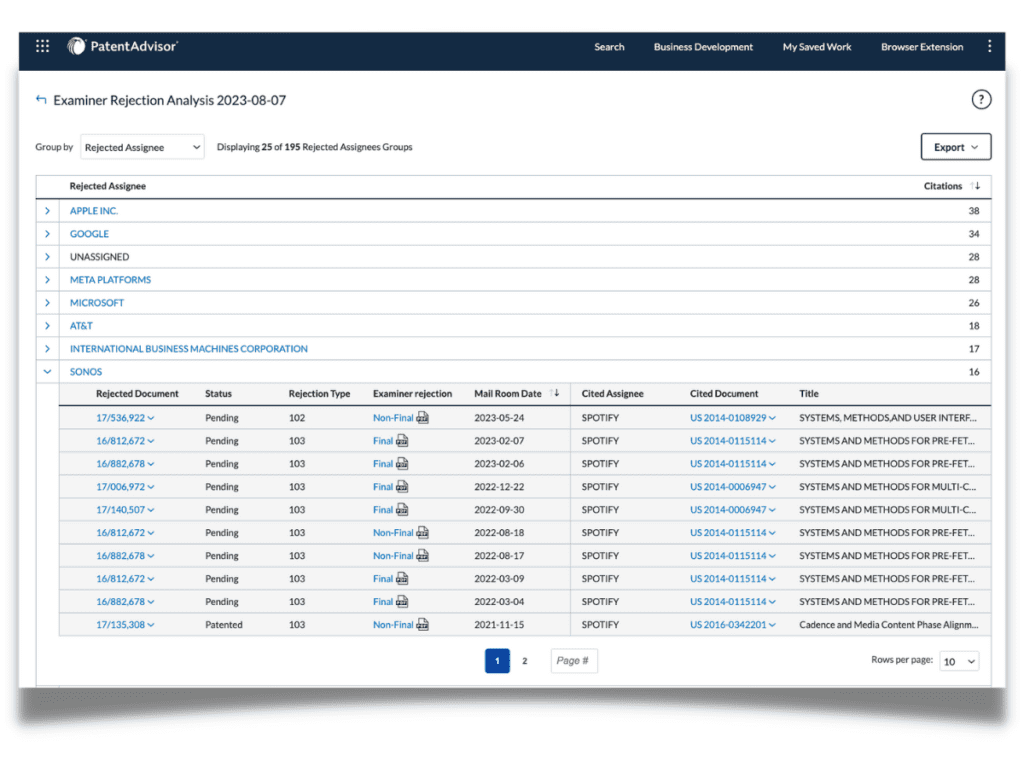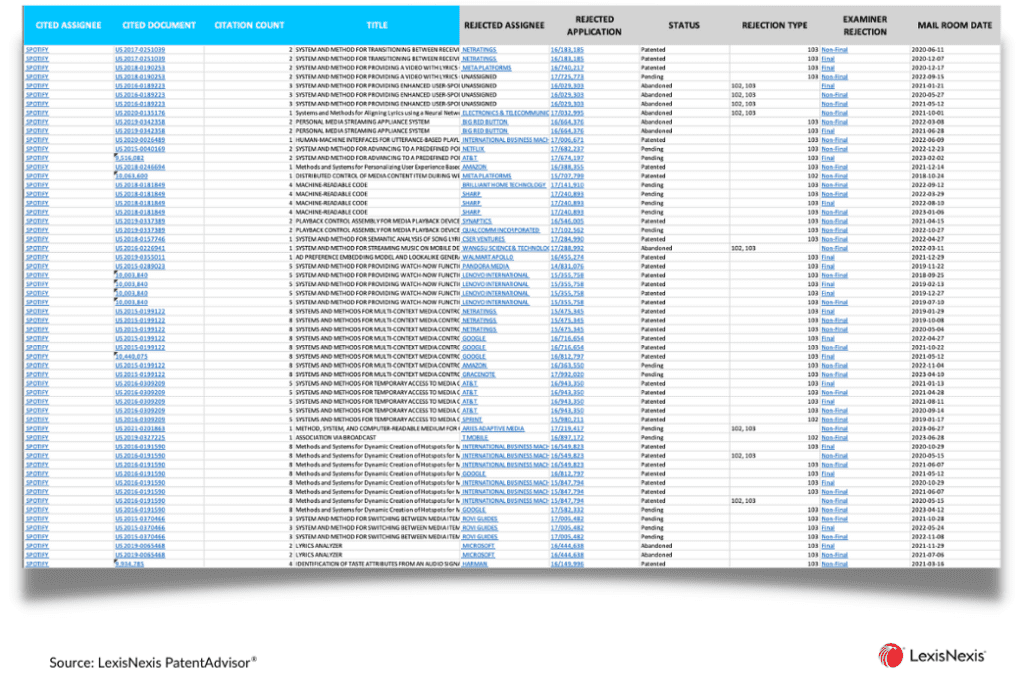How to Find Your Next Patent Monetization Opportunity Using Examiner Rejection Data

In the complex and ever-growing world of intellectual property, finding valuable licensing opportunities can feel like searching for a needle in a haystack. Patent attorneys are increasingly pressured to reduce and improve operational efficiencies while working under strict resource limits. However, with the advent of prosecution analytics tools, such as LexisNexis PatentAdvisor®, patent professionals can tackle some of their most complex challenges, like identifying patent monetization opportunities and finding winning arguments against Office Actions, with ease.
This blog will explore the fascinating intersection of patent licensing and prosecution analytics. We’ll explore how data can be used to uncover hidden gems in a patent portfolio, turning a daunting task into a strategic, high-return business activity. Whether you’re a seasoned law firm, an in-house intellectual property professional, or a newcomer to the field, this blog will provide valuable insights to help you navigate the patent monetization landscape with confidence and foresight.
How IP departments rebrand themselves by finding patent monetization opportunities
Companies get patents to protect products, defend their position in the market, or monetize their assets. Patent professionals want to support their companies or clients throughout the IP lifecycle, especially in helping commercialize their assets. These professionals also want to identify applications with a high potential for licensing or selling and see where there may be infringement risk.
The licensing play is increasingly evident as intangible assets like patents account for nearly 90% of the S&P 500’s market value. Coupled with the fact that prosecution cost and patent maintenance are high-ticket line items in a budget, it makes sense that attorneys and heads of IP want to find licensing potential in the portfolios they manage. This will help them transform the image of their IP departments from cost centers to profit centers.
Patent professionals have long accepted that forward citation data provides valuable insight for finding competition, partners, and licensing opportunities. When another company cites your patent, it indicates their potential interest in your technology. If you know a company is developing technology similar to yours, you have an advantage in negotiations to license or sell your technology. Insights from this data allow IP departments to scout and find licensing opportunities within their portfolios without sifting through individual rejection documents and claims.
Leveraging examiner citation data to find patent monetization opportunities
Examiner citations are a neutral 3rd party (i.e., the examiner) saying, “These companies are working on tech similar to yours.” Such citations, received to one of your patents during the application stage by a competitor, clearly indicate that they are interested in developing similar technology. This information can benefit the business in many ways, ranging from licensing negotiations to M&A due diligence.
Advanced patent prosecution analytics tools, like PatentAdvisor®, allow patent professionals to quickly identify valuable information from the vast mass of citation data available. Here is a step-by-step process to find monetization potential in your portfolio using insights from examiner citation data. For this blog, we have used the Spotify portfolio as an example and will look at monetization potential within this set of patents.
Step 1: Search for the portfolio of the company you want to identify licensing opportunities within. In our example, the ‘Spotify’ portfolio.
Step 2: Use grouping filters to group results based on the number of citations received by a patent; these are your patents (Spotify, in this example) that were most cited by patents from other companies.
In the PatentAdvisor Examiner Rejection Analysis results, we used the “Group by: Cited Document” filter to view these results.
Step 3: Look through the drop-down section under each of your patents to find the most recent citations received. These results provide a concrete starting point for finding licensing and monetization opportunities.
Step 4: An alternate perspective of this data shows us which companies are interested in your technology, with a count of the number of citations made from their patents to yours. We used the “Group by: Rejected Assignee” search filter to look at the Spotify patents from this perspective.
With news of Sonos getting into the music streaming game, the IP team at Spotify could use all the insights they can get by looking at the citations received by their portfolio from Sonos’ patents. Spotify’s IP team could gain valuable insights by reviewing citations from Sonos’ patents, especially if they find a rejected application similar to one of Spotify’s patents.
Step 5: If you are using advanced tools, then as the next step, you should be able to export the list to Excel. PatentAdvisor makes it easier for you to find the relevant application documents directly from the exported file with embedded links to:
- QuickPAIR, a PatentAdvisor page that shows a timeline view of an application at the USPTO.
- Cited and Rejected Assignee dashboards that show their respective prosecution statistics, and
- PDFs of rejection documents.
Monitor citations – Find monetization opportunities in your portfolio
In the intricate world of IP management, where portfolios are becoming increasingly larger and more complicated, uncovering licensing opportunities can be transformed into a strategic business activity. Leveraging advanced prosecution analytics tools like LexisNexis PatentAdvisor®, IP professionals can efficiently find hidden gems in the patent portfolios they manage. For patent professionals still relying on legacy licensing scouting processes, features like the Examiner Rejection Analysis offer a reprieve from having to scan through individual application rejection and Office Action documents to find relevant information. We hope that the step-by-step guide we presented above helps you in your quest to make the most out of your patents. and turn from cost centers to profit centers.
Are you interested in a free licensing scout report for your company or a client’s portfolio? Request a call back from our experienced analysts, who will guide you through a similar process.
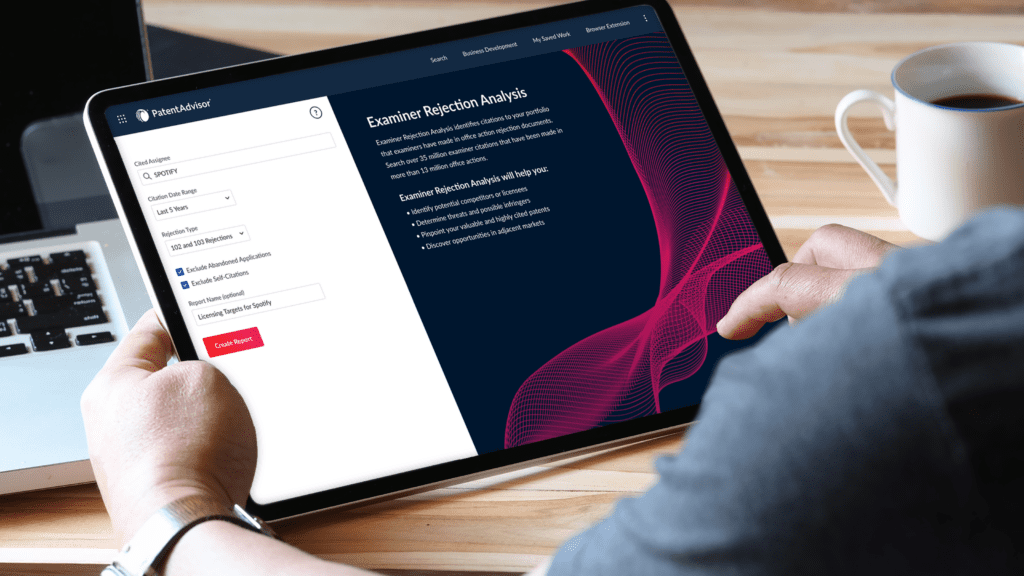
New Feature
Find patent licensing opportunities based on examiner citation analytics
Proactively identify licensing opportunities, infringement risks, and ways to maximize portfolio value with the new PatentAdvisor™ Examiner Rejection Analysis. Find out how you can leverage the powerful insights derived from 20+ years of 102 and 103 rejection data.


